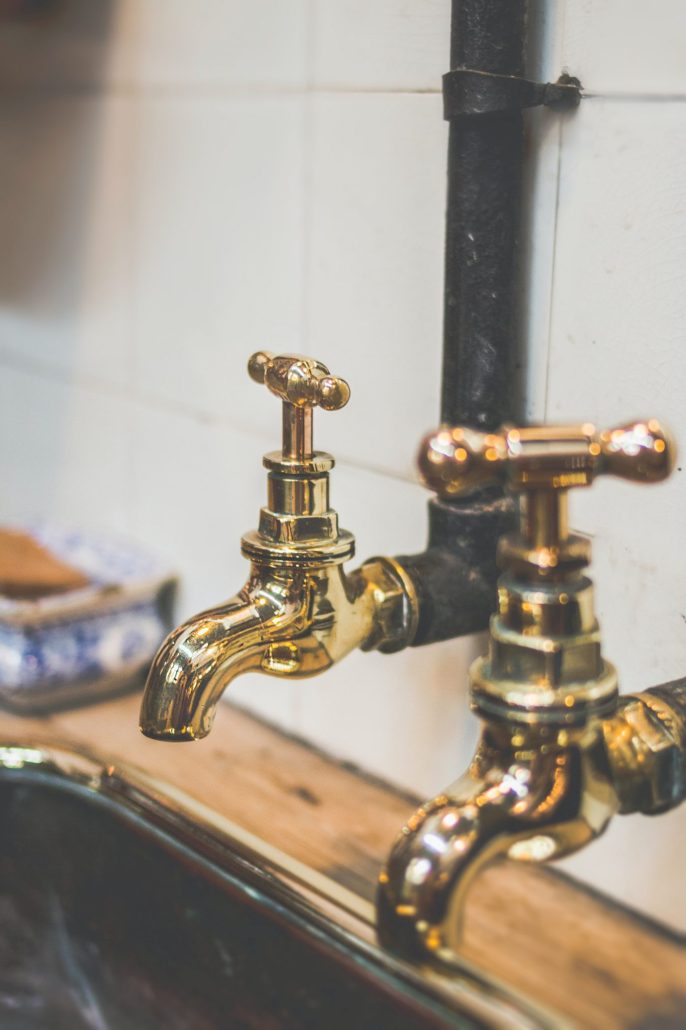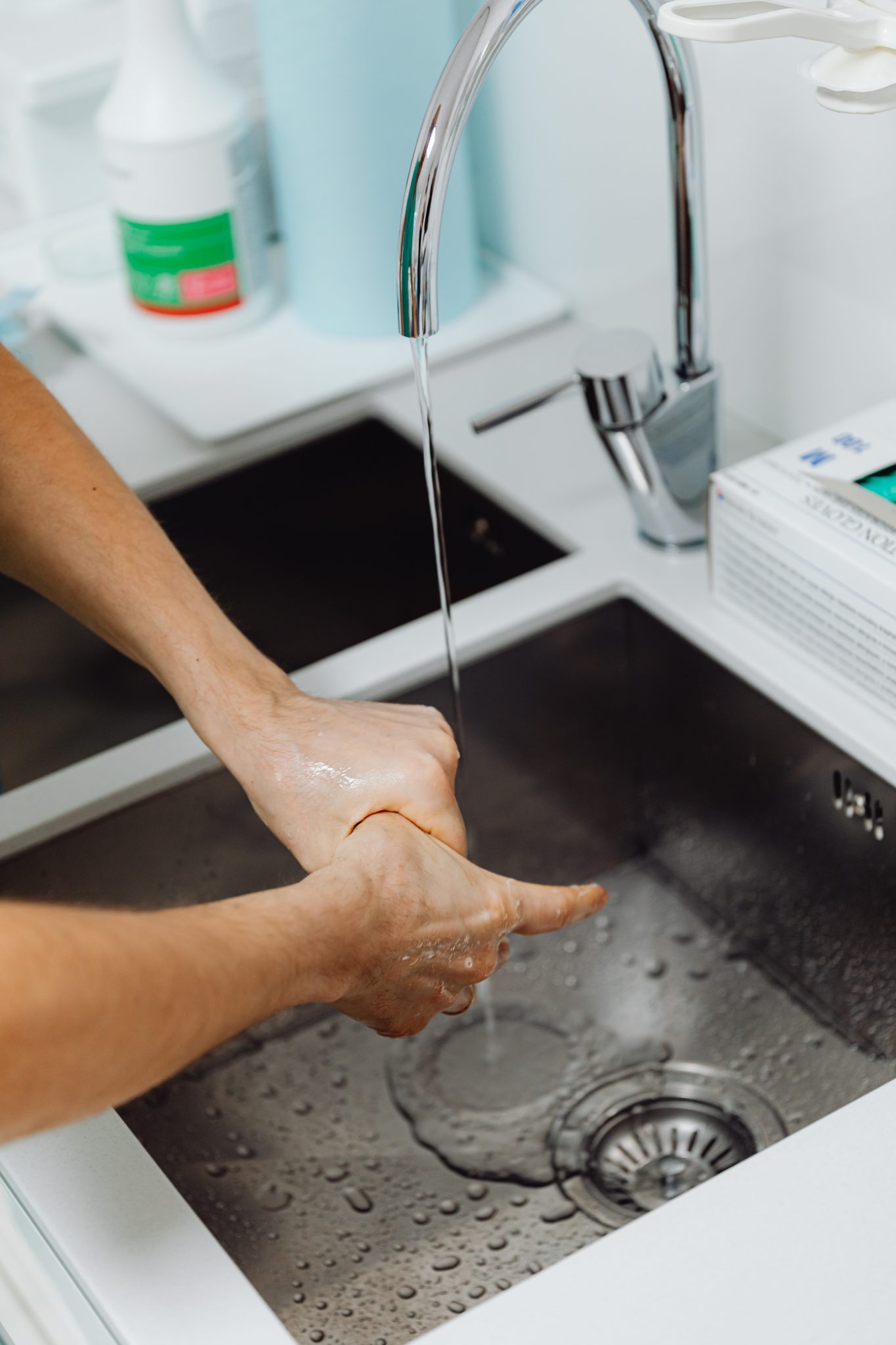What Is Drain Cleaning?
It is the process of mechanically removing obstructions within a drain system that are impeding proper flow. Oftentimes for those plumbers who claim to clean a drain, it is merely popping a hole within a drain and not actually cleaning it. Proper cleaning of a drain involves a thorough inspection of the drain after cleaning to confirm that all of the obstruction has been removed and to determine what caused it. If a plumber simply unclogs a 2” and larger drain and does not inspect afterward, there is no way to know for sure if the drain is actually cleaned nor to see what caused it. What we do at Dynamic Drains Plumbing and Drain Experts is specialize in surgical drain cleaning and pinpointing the cause and location with our color sewer camera and pipe locating devices.
When we get a call for a clogged drain, it is usually not the first time it has happened nor does it just happen out of the blue. Usually, we find things like root intrusions, a sag in the pipe, misalignments, scale build-up, or a separation. These are things that can cause a clog because it is usually not just paper or organic waste. Usually, a clog is a symptom of a larger issue. What we aim to do is find the cause, not just the symptoms.
Drain Inspections Are Not To Be Overlooked

Unfortunately, we regularly have new homeowners call for a clogged drain soon after moving in, or sometimes in the process of moving in. In these cases, the potential buyer had no sewer inspection performed prior to the purchase of the home. We always recommend having this inspection done prior to deciding whether or not to buy a home, regardless of the home’s age. When a clog occurs, invariably on a Friday night or holiday when the family is visiting, the new homeowners are caught off guard. This scenario can happen for a number of reasons. Maybe the previous owner did not know there was an issue, to begin with, especially with older homes. Sometimes a home sits vacant for a long while or the previous occupants were a couple that did not use as much water as a young family would. During a standard home inspection process, an inspector will flush the toilets, run the fixtures, or simply look into the sewer clean-out but not really inspect the system, thus, no one knows the true condition of the system. When we first get to a clog, our job is straightforward – get it unclogged … so that we can see what caused it. We start out with specialty drain cleaning equipment that utilizes the latest in drain cleaning technology, such as a hydro-jetter or high-speed drain cleaning machine. These tools allow us to safely attempt to unclog the drain so that we can inspect the cause.
Method 1: Hydro Jetting To Get The Job Done Right
What is hydro-jetting? Simply put, it is a pressure washer for the inside of the drain. It safely and effectively cleans all 360° of the inner walls of the drain with water flowing through specialty hoses and nozzles designed for just this process. A common concern is that a hydro-jetter may damage an old pipe or a PVC pipe. Though the hydro-jetter uses upwards of 3500 psi at the working end, it is spraying the water through focused jets at an angle that scrapes the walls as opposed to aimed at 90° towards it. It is actually closer to a 15-20° angle. What about old cast iron pipe? Older cast iron pipe develops a layer of scale on the inside that can catch paper and waste. A hydro-jetter can remove that scale effectively. It does not blow holes in the pipe but with cast iron, it can expose existing holes that have been covered by scale so we always play it safe when hydro-jetting cast iron and make sure to use a camera during descaling so that we can monitor the process.
A great reason for using a hydro-jetter is if a line has heavy grease build-up. The cold, high-pressure water will break up hardened grease and soap deposits very well and turn them into small bits that will float on down the line and leave the line looking new. A traditional sewer cable machine that rotates at 200-250 rpm can not clean nearly as effectively as a hydro-jetter as it will leave much of the build-up on the walls. We can also use our sewer camera simultaneously as we hydro-jet so we are not wasting time cleaning areas that do not need it. We have videos demonstrating this on our YouTube channel: Dynamic Drains Plumbing and Drain Experts.
Method 2: A Versatile High Speed Drain Cleaning Machine With Pinpoint Accuracy
Another great method for drain cleaning that was mentioned earlier is our high-speed drain cleaning machine. We have two pieces of equipment that utilize this technology. One uses an 8mm cable and one uses a 10mm flexible cable both with a plastic sleeve over the cable that spins. The smaller one spins at 2000 rpm and the 10mm spin at 3200 rpm. That sounds like it would be potentially damaging if you have seen traditional blades used to unclog sewers. But fear not. The high-speed drain cleaning machines use a different type of head to unclog the line and rely on speed instead of torque, like traditional machines. The guide, design, and speed of the high-speed cable keep the head centered within the drain so that it does not wobble around in the pipe as it cleans all 360° of the inside of the pipe. The heads have chains attached at either side of the head and can be adjusted for different diameter drains. Why is this good? It means we can access a clogged 4” sewer through smaller diameter access if need be. And, just like the hydro-jetter, we can have the camera right in the sewer line with the cable for pinpoint accuracy with cleaning. Unlike a hydro-jetter, there are many more applications to using this technology because it does not use water, only electricity for the motor so it is not limited to a water source. Another great benefit to this particular technology is that there is a wide assortment of heads for cleaning more than just roots and grease. There are heads for breaking up grout, concrete, wood debris, plastics, etc. It is a versatile piece of equipment. For a great demonstration of this technology, check out our YouTube channel under Dynamic Drains Plumbing and Drain Experts where there is a video titled “Best Drain Cleaning Method, Period!”.
It Is Even Beneficial To You!
So how does this system benefit the customer? This particular equipment, the high-speed drain machine, is much more compact, cleaner, and has a stainless steel casing around the motor and cable. If a toilet must be removed in order to attempt to unclog a line, a traditional machine will sling sewer water as the cable spins, thus making for unsanitary conditions and a big mess to contain. The high-speed drain cable has a plastic sleeve around the cable that actually spins so there is no concern for a sewage-covered cable to spin and fling raw sewage around. This makes for a much cleaner working environment and less chance for damage to a customer’s home.
What I love about having this arsenal of equipment is that it allows us to serve our customers better and offer more reasonable solutions. There is not one drain cleaning tool or equipment that works for all scenarios and we know this, which is why we do still have traditional drain cleaning cables for certain jobs where they are best suited.

No Chemicals No Problems
What about using chemicals to unclog a drain? At Dynamic Drains Plumbing and Drain Experts, we do not use any chemicals for unclogging drains for a few reasons. One, they rarely work on the types of clogs we encounter due to most of the common drain opening chemicals utilizing a mixture of lye, bleach, and aluminum that can not effectively dissolve most clogs. Secondly, being they can react with other chemicals within a drain, they simply are not safe and can cause chemical burns or unknown reactions. Thirdly, and most importantly, we are licensed professional plumbers who are tasked with the job of unclogging and confirming that a drain is flowing properly. In order to do this, we have to know that we have done our job so using a chemical and hoping for the best is not professional plus it will not fully clean a drain anywhere close to a mechanical method. Chemical drain openers can also damage certain pipes over time, especially cast iron, contrary to what manufacturers state in their advertising. We know this because we have seen the results of its time and time again. The worst type of drain unclogging chemical is sulfuric acid. It is not a good idea to use sulfuric acid for obvious reasons as it is very caustic and hazardous. It can injure the user, damage the finish on fixtures, and corrode certain metals. One concern we have when we go to a call for a clogged drain is whether or not someone used a chemical to attempt to unclog it prior to our arrival. We always ask if that is the case before we begin work. The chemicals available to the public that we have dealt with in the past have damaged our equipment and caused chemical burns. We will attempt to neutralize the chemical prior to using our equipment and confirm it is safe. We are not against property owners attempting to unclog a drain on their own, but please only use mechanical means.
What about drain maintainers for preventive maintenance?
What about drain maintainers for preventive maintenance? These products are not caustic and most use bacteria that will consume organic waste such as grease and soap. They turn it into water and CO2. The correct method for using these products is using them periodically to help keep from build-up occurring within a horizontal drain for a kitchen or bathroom sink. The only real issue with these is that they rely on regular application of the product and oftentimes are incorrectly used in an attempt to unclog a line that is currently clogged. They work based on reacting with the build-up but only if the drain is flowing as it should. For commercial applications of preventive maintenance drain products, the business owner must train their employees to use the product or have an automatic injector which can add to aggravation and cost. We feel that periodic mechanical drain cleaning and video inspection is a much more guaranteed method for commercial kitchen drain maintenance and will eliminate the potential of emergency clogs.
We hope this article helps to explain a little about what we do and the different methods we use for drain cleaning.